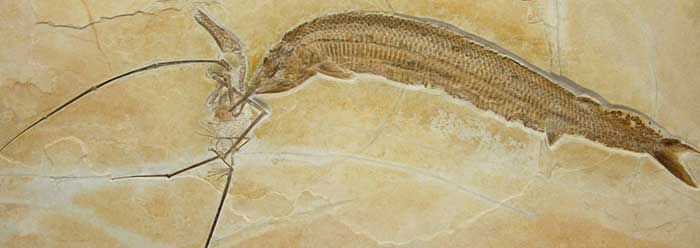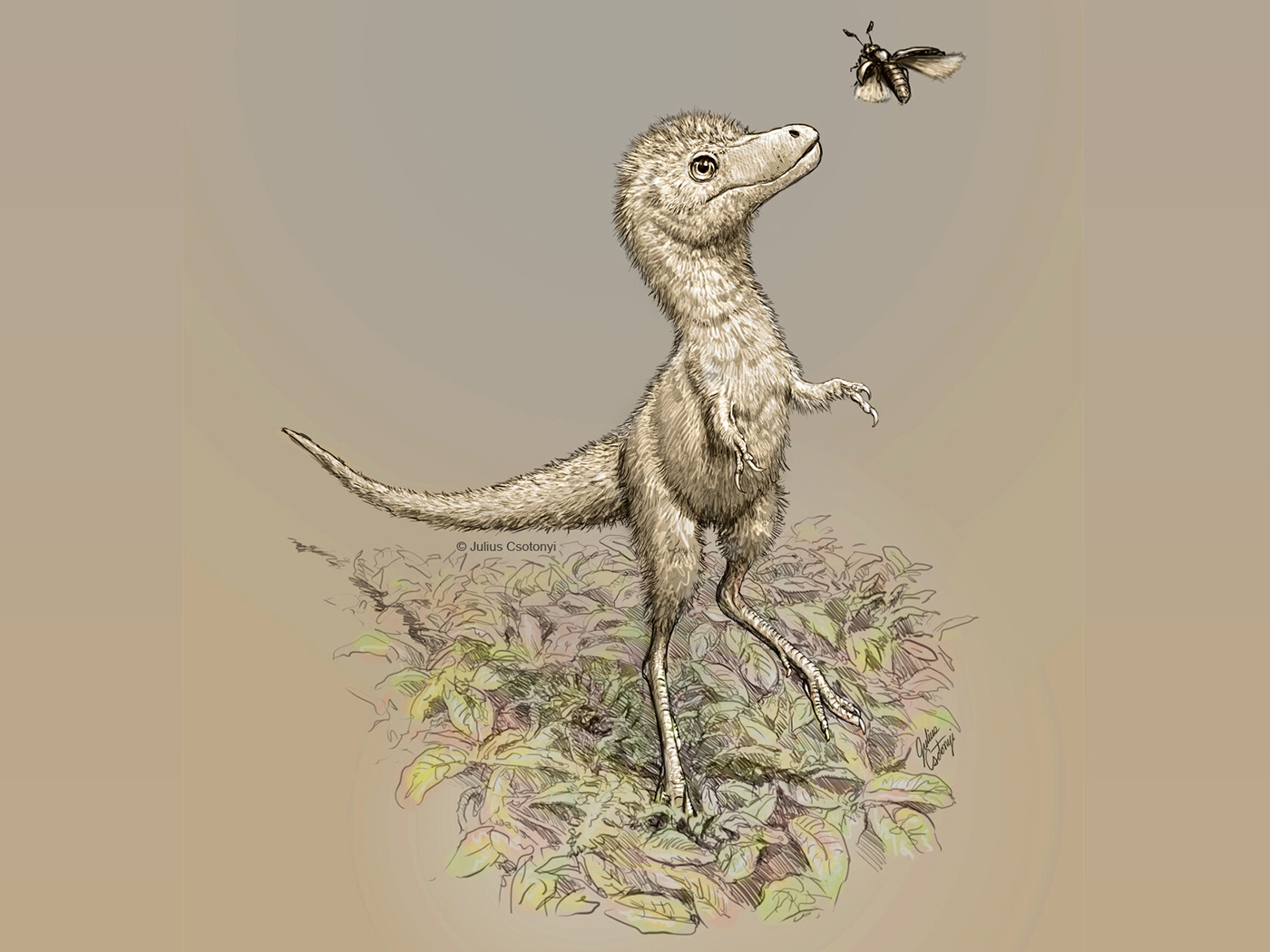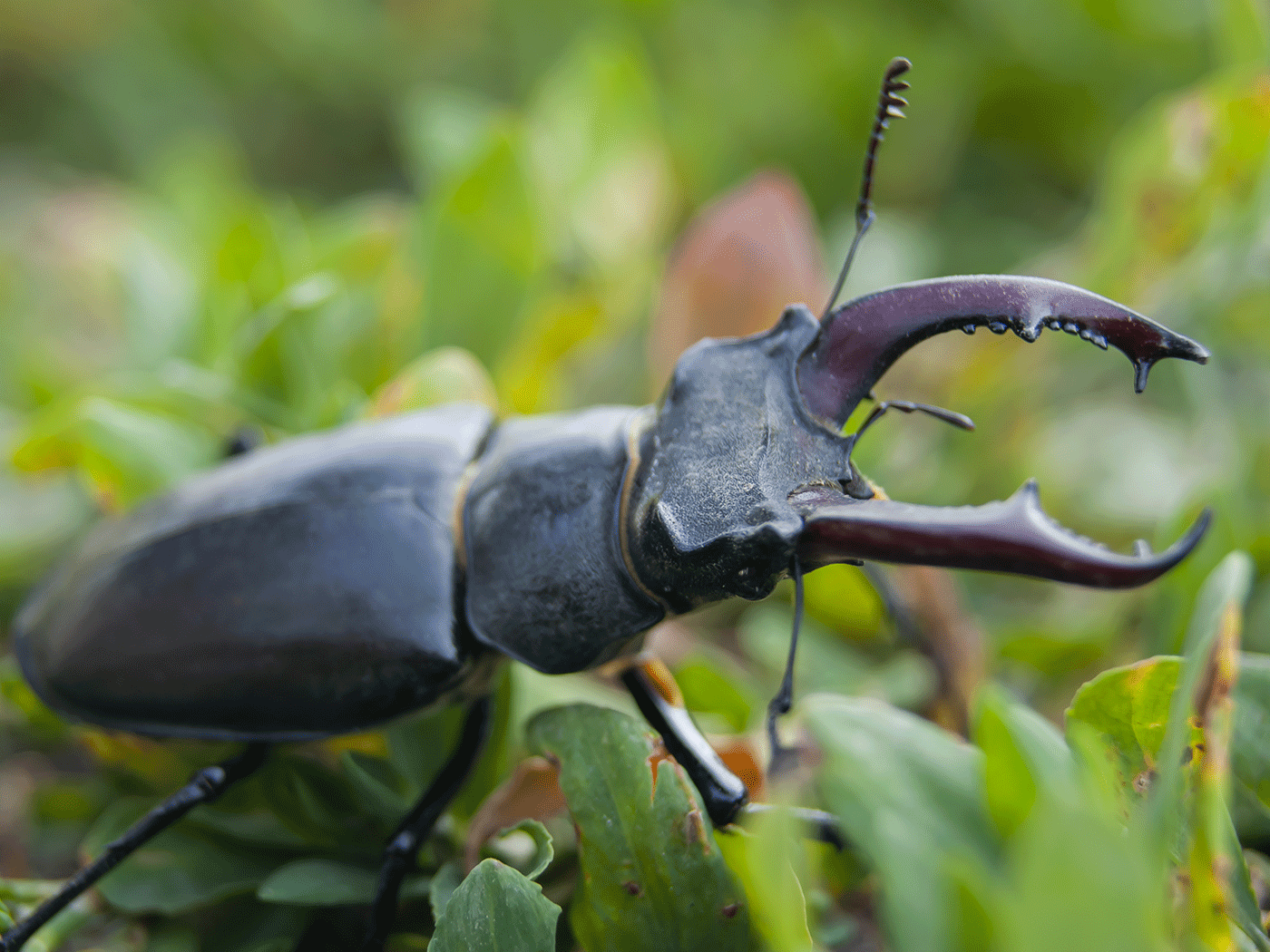A newly described fossil consists of a flying reptile with a smaller fish in its throat and a larger fish biting its wing.
The flying reptile, a Rhamphorhynchus pterosaur discovered in the famous Solnhofen Limestone in southern Germany, had apparently been skimming the water surface when a large extinct fish called an Aspidorhynchus caught its wing. The violent scene seems similar to Native American legends of flying reptiles.
For instance, the Sioux Nation has a rich tradition of passing down stories orally from generation to generation. Some of their legends tell of large flying reptiles that hunted water creatures.
Although many Native Americans associated these "thunderbirds" with mystical origins and powers, ancient ancestors of these people groups could have witnessed actual creatures. The Reverend Gideon Pond was the first resident missionary among the Dakota Sioux of Minnesota.1 Fossil historian Adrienne Mayor quoted Pond, who wrote in the late 1830s, "Many stories are told of these beings and their mortal combats."2
The Dakota Sioux called the thunderbirds "wakinyan," and they could point out "collapsed river bluffs, very common along the Missouri River, as places where Thunder Birds had swooped down to attack Unktehi [a monstrous water reptile] and its relatives."2
The German find was not as huge as the creatures portrayed in the legends, but fossils show that some pterosaurs had wingspans up to 40 feet. Fossils also show that huge water reptiles, perhaps like those in the Native American stories, once existed. And according to the Bible, all these creatures were made during the same creation week along with mankind, so they all co-existed for many years.
The most striking similarity between this fossil discovery and the legends is more in behavior than in size. Eberhard Frey and Helmut Tischlinger published the fossil description in the online journal PLoS ONE. They wrote, "Large Aspidorhynchus thus could grab a skimming Rhamphorhynchus by just raising the head through the water surface. The specimen presented here strongly suggests that Aspidorhynchus actually did exactly this."3
This unique set of fossils appears to corroborate ancient Native American legends of flying reptiles that fished the water's surface and of sea creatures that in turn preyed on the flyers. Evolution has no explanation for any such eyewitness accounts, but both the legends and fossil data are easy to interpret in the framework of a young world in which pterosaurs and humans lived at the same time.
References
- Pond, S. W. 1865-1875. The Dakota or Sioux in Minnesota as They Were in 1834. Manuscript reprinted in Collections of the Minnesota Historical Society. 1908. Minneapolis, MN: Harrison & Smith. 12: 319-501.
- Mayor, A. 2005. Fossil Legends of the First Americans. Princeton, NJ: Princeton University Press, 238.
- Frey, E. and H. Tischlinger. 2012. The Late Jurassic Pterosaur Rhamphorhynchus, a Frequent Victim of the Ganoid Fish Aspidorhynchus? PloS One. 7 (3): e31945.
Image credit: Copyright © 2012 Frey and Tischlinger, PLoS ONE 7 (3): e31945 (open access article, usage does not imply endorsement).
* Mr. Thomas is Science Writer at the Institute for Creation Research.
Article posted on April 16, 2012.
























